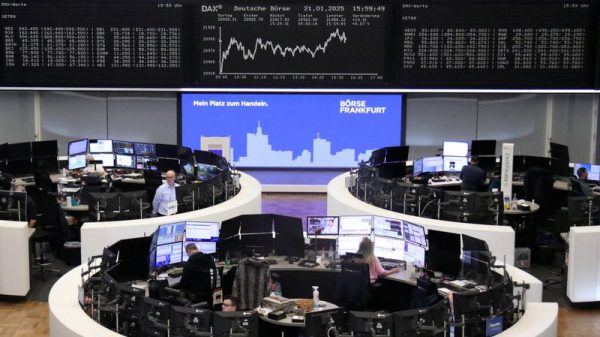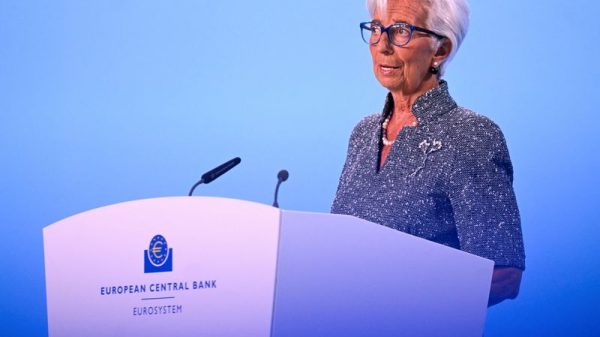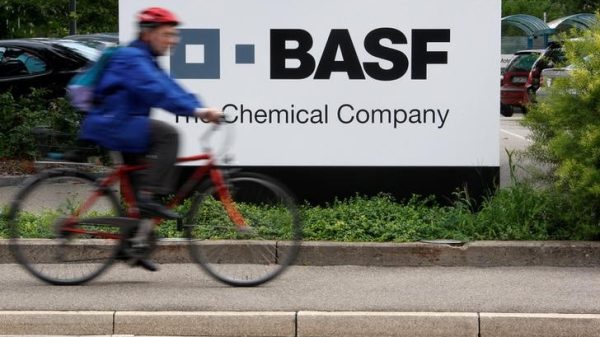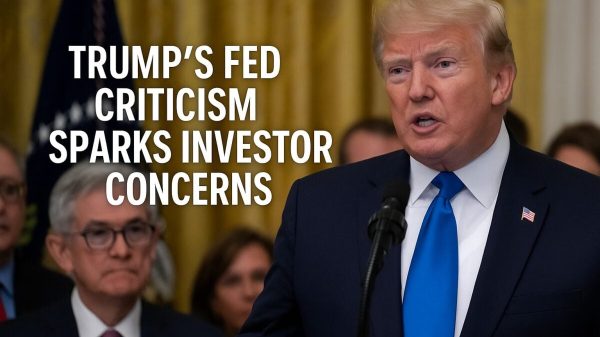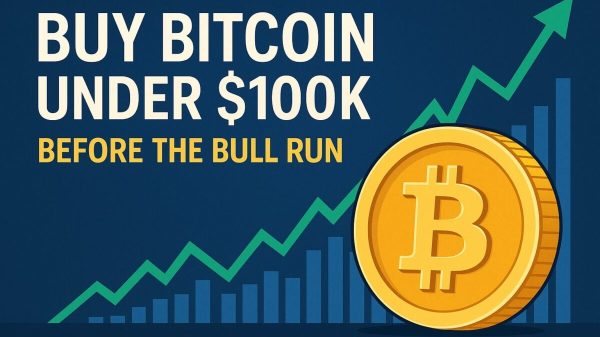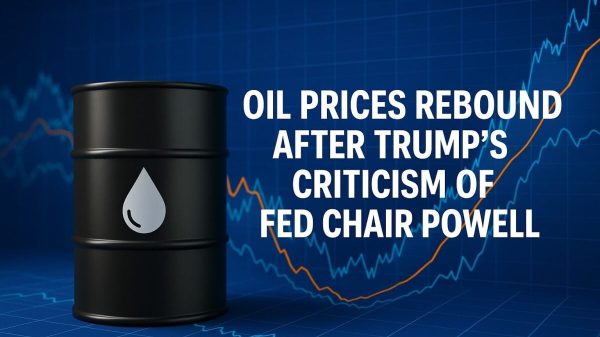On October 30, 2024, Northwest Pipe Company (NASDAQ:NWPX), a leading manufacturer of engineered pipeline systems, reported a robust third-quarter performance with a significant increase in consolidated net sales and gross profit. CEO Scott Montross and CFO Aaron Wilkins led the earnings call, announcing a 9.7% year-over-year increase in net sales to $130.2 million and a 40% rise in gross profit to $27 million. Despite some challenges, the company expects a strong fourth quarter and remains focused on strategic growth initiatives.
Key Takeaways
Consolidated net sales rose by 9.7% to $130.2 million, with a gross profit surge of 40% to $27 million.
Steel Pressure Pipe (SPP) segment revenue increased by 6.7% to $85.9 million, while the precast segment grew by 15.8% to $44.3 million.
Consolidated net income reached $10.3 million, or $1.02 per diluted share, up from $5.8 million the previous year.
Backlog in the SPP segment decreased due to job award timing and lower steel prices.
The company anticipates a strong fourth quarter and ongoing growth into 2025, driven by robust bidding activity and improving market conditions, particularly in the precast sector.
Company Outlook
Northwest Pipe aims to improve margins, enhance cost efficiency, and pursue strategic acquisitions.
Shareholder value is expected to be increased through potential share repurchases.
Management projects a strong bidding environment to continue through 2024 and into 2025.
Bearish Highlights
The SPP segment’s backlog decreased to $282 million from $348 million in June.
Challenges faced in non-residential construction for the precast segment due to high interest rates and severe weather in Texas.
Bullish Highlights
Strong residential demand driving growth in the precast segment.
Stable steel price around $700 per ton contributing to a favorable margin outlook.
Significant revenue turnaround in the precast segment, with expectations of continued strength into 2025.
Misses
A decline in selling prices, primarily due to a shift in product mix towards lower-priced Geneva precast infrastructure products.
Increased covert work at Geneva facilities, contributing positively to margins despite not being high-priced.
Q&A Highlights
CEO Montross emphasized the importance of cash flow management and the priority of improving cash collection processes.
The company reported strong margins in the SPP segment and expects to maintain approximately 19% margins in Q4.
Capacity utilization rate at 65% supports margin stability and potential growth.
Projected CapEx for 2025 is between $16 million and $18 million, with active pursuit of M&A opportunities.
Anticipated IIJA funding expected to significantly boost business levels from 2026 to 2028.
Northwest Pipe Company continues to navigate through market fluctuations while maintaining a clear strategic vision for growth. The company’s performance in Q3 2024, highlighted by record gross profit and increased net income, demonstrates resilience and adaptability. With a strong focus on margin improvement, operational efficiency, and strategic expansion, Northwest Pipe Company is positioning itself for sustained success in the years ahead. The next earnings call is scheduled for March, where the company will discuss full-year results and future projections.
InvestingPro Insights
Northwest Pipe Company’s (NWPX) strong third-quarter performance is further supported by recent data from InvestingPro. The company’s market capitalization stands at $450.41 million, reflecting its solid position in the engineered pipeline systems industry.
InvestingPro data shows that NWPX has achieved impressive revenue growth of 9.54% over the last twelve months as of Q3 2024, aligning closely with the 9.7% year-over-year increase in net sales reported in the earnings call. This growth is complemented by a robust EBITDA growth of 22.84% over the same period, indicating improved operational efficiency.
The company’s financial health is underscored by two key InvestingPro Tips. Firstly, NWPX is trading at a low P/E ratio relative to near-term earnings growth, with a current P/E ratio of 15.29 and a PEG ratio of 0.59. This suggests that the stock may be undervalued considering its growth prospects. Secondly, NWPX has demonstrated a strong return over the last three months, with a price total return of 18.22% over that period.
These metrics support management’s optimistic outlook for the fourth quarter and into 2025. The company’s profitability is further emphasized by its operating income margin of 9.6% over the last twelve months, which aligns with the margin stability discussed in the earnings call.
For investors seeking more comprehensive analysis, InvestingPro offers additional tips and insights. In fact, there are 8 more InvestingPro Tips available for NWPX, providing a deeper understanding of the company’s financial position and market performance.
Full transcript – Northwest Pipe Company (NWPX) Q3 2024:
Operator: Greetings and welcome to the Northwest Pipe Company Third Quarter 2024 Earnings Call. At this time, all participants are in a listen-only mode. A question-and-answer session will follow the formal presentation. [Operator Instructions] As a reminder, this call is being recorded. It is now my pleasure to introduce your host, Scott Montross, CEO. Thank you. You may begin.
Scott Montross: Good morning, and welcome to Northwest Pipe Company’s Third Quarter 2024 Earnings Conference Call. My name is Scott Montross and I am President and CEO of the company. I’m joined today by Aaron Wilkins, our Chief Financial Officer. By now all of you should have access to our earnings press release which was issued yesterday October 30, 2024 at approximately 4:00 p.m. Eastern Time. This call is being webcast and it is available for replay. As we begin, I’d like to remind everyone that the statements made on this call regarding our expectations for the future are forward-looking statements and actual results could differ materially from expectations. Please refer to our most recent Form 10-K the year ended December 31, 2023 and in our other SEC filings for a discussion of such risk factors that could cause actual results to differ materially from our expectations. We undertake no obligation to update any forward-looking statements. Thank you all for joining us today. I’ll begin with a review of our third quarter performance and outlook for 2024. Aaron will then walk you through our financials in greater detail. Once again, we delivered strong third quarter results achieving new quarterly records in several key financial metrics. Our performance was driven by growth on the residential side of our precast business, as well as ongoing strength in our steel pressure pipe business. Our consolidated net sales increased 9.7% year-over-year to $130.2 million, outpacing our strong second quarter and reflecting the highest quarterly revenue ever reported by the company. And the $27 million of gross profit generated in the third quarter was also a quarterly record. In addition our focus on effective working capital management helped drive another quarter of strong cash flow generation. To further break down our segment level results. Revenue from our steel pressure pipe segment remained at near record levels totaling $85.9 million and increasing 6.7% year-over-year in line with our expectations. Our performance primarily reflected continued high production levels due to the ongoing strength in the bidding environment that has carried over into the second half of 2024, as well as changes in timing. Our SPP backlog including confirmed orders was $282 million as of September 30, down from $348 million as of June 30, 2024 and down from $335 million as of September 30, 2023. Although our backlog declined, our SPP team has done a tremendous job executing on bids and projects. We attribute the third quarter decline in backlog primarily to the timing of expected job awards our mix in backlog and to a lesser extent lower steel prices. Nevertheless we believe our backlog remains healthy and the bidding environment remains strong with a significant number of tons expected to bid in the fourth quarter. As a result we expect our backlog to improve through year-end. Our third quarter performance was partially offset by lower realized selling prices due primarily to lower raw material costs. While steel prices were fairly volatile throughout the course of the third quarter they appear to be stabilizing in the $700 per ton range with lead times standing at about four to five weeks. Now turning to our precast segment. Precast revenue increased 15.8% year-over-year to a new quarterly record of $44.3 million, driven by strong operational execution by our teams in the field and a backdrop of continued robust demand on the residential side of our Geneva business, which resulted in strong production and shipment levels. However reduced shipments on the nonresidential construction related portion of our precast business at Park offset some of this strength, mainly due to the continued impact of current interest rate environment on the commercial construction portion of the business. We expect this to reverse and become a tailwind as rates continue to come down. To a lesser extent our production was also impacted by the severe weather events we experienced in Texas in July. Currently in the nonresidential construction market for projects that are going in the planning which is generally about 12 months prior to breaking ground, the commercial and institutional segments are up 31% and 4%, respectively versus year’s levels. As interest rates fall, the length of time between planning and breaking ground is expected to compress. As a result, we are expecting upcoming near-term strength in the non-residential market. On the pricing side, the residential part of our Precast business has enacted multiple price increases throughout 2024, driven by strong demand that we’ve experienced at the Geneva locations. However, our nonresidential Precast business experienced some downward pricing pressure as a result of the elevated interest rate environment and the negative impact it has had on the commercial construction demand. With the initial Fed 50 basis point rate cut in September and the additional cuts that are expected before year-end, we expect the non-residential construction market to strengthen in the near term. As of September 30, our Precast order book totaled $57 million, down modestly from $62 million as of June 30, 2024, reflecting the resilience this segment as we enter the traditionally slower time of the year, and it was up from $52 million as of September 30, 2023. Our consolidated gross profit for the third quarter increased 40% year-over-year to $27 million, a new quarterly gross profit record for the company, which resulted in a strong gross margin of 20.8%, up from 16.3% in the third quarter of 2023. This is the strongest quarterly gross margin we’ve reported for the current SPP and Precast configuration of the company. Our SPP gross margin of 19.4% was strong, increasing by approximately 580 basis points over the prior year period and 40 basis points over the prior quarter, primarily due to high production volume with strong overhead absorption as well as changes in product mix. This, in addition to the ongoing strength in the bidding activity we’ve been experiencing. Our Precast gross margin of 23.5% improved by approximately 160 basis points over the prior year period and 140 basis points over the prior quarter, primarily resulting from the strength in the residential construction market as well as changes in product mix. Margins on the residential construction side of the Geneva location strengthened versus the year ago quarter. As indicated, non-residential commercial construction market demand has been adversely affected by the high interest rate environment creating some margin compression. In addition, early third quarter severe weather-related impacts on our production and shipping days not only reduced early third quarter revenue at the Park facilities, but also reduced production levels, leading to lower overhead absorption further impacting nonresidential margins. Next, I would like to provide an update on our Precast product spread strategy to promote organic growth in the business. Year-to-date, we have bid on over $47 million worth of projects outside of the state of Texas and booked approximately $8 million worth of orders. As a result of our ongoing efforts to enhance capacity utilization at our Texas-based Precast plants to maximize overall efficiency and production volume. Further, we gained additional traction on product spread at the Geneva plants in Utah by booking approximately $1.7 million of Park-related projects. Our goal is to look in excess of $2 million worth of Park-related projects at Geneva in 2024. As previously noted, once the Park Precast products established at the Utah locations, we plan to expand our product spread strategy to additional current Northwest Pipe geographic locations. This is in the planning stage and is scheduled to occur over the next couple of years. Further to expanding our capacity, we are pleased to report that our investment in the new reinforced concrete pipe and manhole mill at our Salt Lake City Utah facility is near completion. This will unlock additional production capacity and capabilities, positioning the Geneva business for additional growth. In addition to our organic growth activities, we are continuing to actively evaluate M&A opportunities in the Precast related space that would help accelerate progress in our Precast strategy by increasing our manufacturing capabilities and production efficiencies and expanding our geographic reach and product portfolio. The deal candidate would be accretive to our earnings, possess strong potential for organic growth, enhance our margins and deliver consistent positive cash flow generation. Properly execute our growth strategy, repaying debt, we’ve incurred to finance the 2021 acquisition of Park USA remains a top strategic focus of our capital allocation philosophy and in the absence of accretive opportunities, we may opt to repurchase shares of our common stock. While we did not repurchase any shares during the third quarter, we remain opportunistic in our approach since the initial authorization of our share repurchase in November on 2023, we bought back a total of 174,000 shares for $5.1 million as of September 30. Before I conclude, I’d like to summarize our outlook for the fourth quarter of 2024. In our SPP business, we anticipate a stronger fourth quarter than we’ve seen in recent years, despite it generally being the slowest quarter of the year due to two major holidays as well as is expected weather-related events. Nevertheless, we expect revenue and gross margins to be relatively strong for fourth quarter of a year, primarily related to a mix of projects that we booked and their overall impact on production volume. We also expect backlog to remain strong by historical standards, given the volume of expected steel pressure pipe bidding for the remainder of 2024. Further, we remain encouraged by the amount of activity we’re seeing on our current and upcoming water transmission projects, which can be found detailed in our investor presentation on the Investor Relations portion of our website. We continue to expect a healthy bidding year in 2025, similar to 2024 levels. In the Precast business, we are expecting our fourth quarter revenue to be down sequentially from the record third quarter we just reported, with relatively stable gross margins. We continue to believe in the strength of the Precast business in the mid- to long term given the significant level of pent-up demand specifically, for residential housing and a growing need for infrastructure spending in the US and our growing market position. In summary, I’m very pleased with the strong operational and financial performance we delivered in the third quarter. Thank you to all of our team members for your continued dedication to success and safety in the field, as we execute our growth strategy in pursuit of enhanced shareholder and stakeholder value. Our performance continues to be bolstered by a strong bidding environment in 2024, that is anticipated to remain elevated throughout the balance of the year and into 2025. Looking ahead, our priorities remain on: one, maintaining a safe workplace where our employees are proud to work; two, persistently focusing on margin over volume; three, continuing to implement cost reductions and efficiencies at all levels of the company; four, intensifying our focus on strategic acquisition opportunities to grow the company; and five, in the absence of M&A opportunities returning value to our shareholders through opportunistic share repurchases. I will now turn the call over to Aaron, who will walk you through our financials in greater detail.
Aaron Wilkins: Thank you, Scott and good morning, everyone. Beginning with our third quarter profitability. Consolidated net income was $10.3 million or $1.02 per diluted share compared to $5.8 million or $0.58 per diluted share in the third quarter of 2023. Consolidated net sales increased 9.7% to $130.2 million compared to $118.7 million in the year ago quarter. Steel pressure pipe segment sales increased 6.7% to $85.9 million compared to $80.5 million in the third quarter of 2023. The improvement was driven by an 18% increase in tons produced, resulting primarily from improved market demand in a continued strong bidding environment, as well as changes in project timing. It was partially offset by a 9% decrease in selling price per ton, due to lower raw material costs. Precast segment sales increased 15.8% to a new quarterly record of $44.3 million compared to $38.2 million in the third quarter of 2023. This was driven by a 35% increase in volume shift, which was partially offset by a 14% decrease in selling prices, resulting from changes in product mix. Our Geneva business continued its strong performance on resilient demand in Utah, while the headwinds for commercial construction demand in Texas continued encumbering our park business that was also slowed by weather-related delays. As a reminder, the products we manufacture are unique and therefore, shipment volumes in the case of Precast, production volumes in the case of steel pressure pipe and the corresponding average sales prices for both segments do not always provide comparable metrics between periods, as they are highly dependent on the composition of each segment’s product mix. Consolidated gross profit was also a record increasing 40% to $27 million or 20.8% of sales compared to $19.3 million or 16.3% of sales in the third quarter of 2023. SPP gross profit increased 52.4% to $16.6 million or 19.4% of segment sales compared to gross profit of $10.9 million or 13.6% of segment sales in the third quarter 2023, primarily due to higher production volume resulting from improved market conditions. Precast gross profit increased 24% to $10.4 million or 23.5% of precast sales from $8.4 million or 21.9% of segment sales in the third quarter of 2023, primarily due to increased shipment volume, particularly in Utah. Selling, general and administrative expenses increased 13.1% to $11.6 million or 8.9% of sales compared to $10.2 million in the third quarter of 2023 or 8.7% of sales. Selling, general and administrative expenses increased 13.1% or $11.6 million or 8.9% of sales compared to $10.2 million in the third quarter of 2023 or 8.7% of sales. The increase was primarily due to higher incentive compensation expense. Our non-cash incentive compensation expense in the third quarter of 2024 was $1.2 million compared to $0.7 million in the year ago quarter. For the full year 2024, we now expect our consolidated selling, general and administrative expenses to be in the range of approximately $47 million to $48 million. Depreciation and amortization expense in the third quarter of 2024 was $5.2 million compared to $4 million in the year ago quarter. We expect depreciation and amortization expense to be approximately $19 million in the full year 2024. Interest expense increased to $1.5 million from $1.2 million in the third quarter of 2023, due primarily to higher interest rates and an increase in our average daily borrowings. The full year 2024, we expect interest expense to be approximately $6 million. Our third quarter income tax expense was $3.7 million resulting in an effective income tax rate of 26.3% compared to $2 million in the prior year quarter or an effective income tax rate of 25.7%. Our tax rate for the third quarter of 2024 and 2023 were impacted by non-deductible permanent differences. We now expect our tax rate for the full year of 2024 to be within the range of 20% to 21%. The change in our expectation is due to the statute of limitations that have expired on uncertain tax positions during the fourth quarter. Now I will transition to our financial condition. Net cash provided by operating activities $22.7 million in the third quarter of 2024 compared to $16.9 million in the third quarter of 2023, due to the company’s improved profitability. Improving cash flows remains a key strategic focus of our business and critical for the execution of both our growth and stockholder return priorities. While our third quarter free cash flows improved, the working capital needs of our steel pressure pipe business can be highly variable between quarters and therefore, we concentrate on the annual performance of this key metric. We continue to anticipate free cash flows to range between $19 million and $25 million for the full year 2024. Our capital expenditures totaled $6 million in the third quarter of 2024 compared to $4.8 million in the prior year quarter. As a reminder, we anticipate completion of the new concrete pipe mill project in Salt Lake City by year-end, which after successful commissioning is expected to improve production yields and efficiencies on reinforced concrete pipe and manhole we produce and sell out of that facility. Anticipate our total CapEx to be in the range of $20 million to $22 million for full year 2024, which includes approximately $8 million of investment in our new reinforced concrete pipe mill and associated building and the remainder primarily for standard capital replacement. As of September 30, 2024, we had $60.7 million of outstanding borrowings on our credit facility leaving approximately $63 million in additional borrowing capacity on our credit line. In summary, we were pleased to deliver another very strong quarter of financial performance and the consecutive quarterly records for consolidated gross profit. Our steel pressure pipe business is well-positioned for the remainder of the year and into 2025 and our Precast business returned a new quarterly revenue record for that segment. These achievements are made possible by our employees’ exceptional execution. I would like to thank each of them for their commitment to safety as well as our shareholders for their continued support and trust in Northwest Pipe Company. I will now turn it over to the operator to begin the question-and-answer session.
Operator: Thank you. We will now conduct a question-and-answer. [Operator Instructions] One moment while we pull for our first question. Our first question comes from Brent Thielman with D.A. Davidson. Please proceed.
Brent Thielman: Hi. Good morning.
Scott Montross: Good morning, Brent.
Aaron Wilkins: Good morning.
Brent Thielman: Hey, Scott or Aaron just on the backlog for the quarter down 16% year-on-year. How much of that decline is just comparisons of lower steel prices versus just what you burned in the quarter in terms of volume?
Scott Montross: I think it’s a little bit of a decline Brent. But right now it’s waiting for some of these jobs awards that we’ve been notified that we’re going to get are a little bit slower coming in. That’s a piece of it and it’s just how things are bidding. And as we’re looking at this we expect the backlog actually to start going up through year end and ultimately the way things were bidding earlier we thought it was going to go down. So I think that — the backlog is strong. And what I would say about the pricing level the steel costs are probably down for us about 22% versus where they were year-over-year but the price is only down 9%. So the price is staying up there pretty good. It’s just a matter of job timing being awarded. And we feel pretty comfortable with the backlog that we’re going to carry out at the end of this year and what we’re going into with the bidding environment next year looks to be pretty similar. So — and what I would say about the current bidding environments or the bidding levels I mean these are — these are okay years with the amount of tons that are bidding in the steel pressure pipe markets, but they’re not huge years. And ultimately with the IIJA funding that’s out there we think that those numbers are going to really jump up as we get out to 2026, 2027 and 2028 based on the amount of projects that are coming through. So I think we’ve got pretty long runway with strong backlog in front of us. And the steel price is going to jump up and down. But I think the most important thing right now Brent is the margin on the steel pressure pipe side is responding positively — getting up to 19.4% even in an environment when it’s just an okay bidding level in the environment and a lot of that is due to the consolidation that’s happened in the business. So we’re pretty comfortable with what’s going on. Steel price is going to fluctuate. And it seems like there’s this invisible barrier that’s at around $700 a tonne where it really doesn’t get much lower than that. We’re 25 years ago in the steel business you saw things drop off the cliff like a rock. You don’t see that anymore. So it seems to get down to around $700 a tonne and then start to bounce back up because we’ve seen steel price increase announcements coming out which will ultimately affect what the amount of backlog is too. Now that’s a long-winded answer and probably a relatively simple question that you asked but I thought I had to get a bunch of that stuff in there for you.
Brent Thielman: I appreciate it, Scott. Maybe just I guess a follow-up on the Scott I mean if everything held constant with steel prices and I know they won’t. How much of a revenue headwind do you have going into next year in SPP just from a pricing perspective? And I don’t think that means any impact to your gross profit since it’s essentially a pass-through but trying to get a sense of what kind of headwind you’d still have it next year just from a pricing perspective.
Scott Montross: I think that if it stays constant to where it is right now we’re going through our annual planning process right now creating annual plan. I don’t see much of a change from — I mean this is a huge year. I mean this is a really big year for steel pressure pipe the way it’s coming in and you can do the numbers annualized and come out what it’s going to be. But I think we’re kind of looking at numbers that are raising the $300 million-plus range. And that’s without anything changing in the steel pricing. And if the steel price goes back up obviously that will carry more revenue and create not a better gross margin but it will create more gross profit dollars. So, I don’t think we have a huge headwind with that right now because we just don’t see price fall down to $345 or $350 a ton now. It stops at like $700. And the pricing is relatively stable because the business has been consolidated down to really three major suppliers in the steel pressure pipe market. Us, Thompson, and American Spiral Weld. So, you have the capacity in the hands of fewer people. And ultimately, it’s a more stable bidding environment because of it.
Brent Thielman: Very good. Just last one. I mean it’s a meaningful turnaround in revenue in precast this quarter. I guess taking all your commentary it seems as though you think there’s some sustainability in this trend going forward just given what you’re seeing out there in the market product spread et cetera?
Scott Montross: Yes. I would say we’re in a situation right now Brent where we’re still not hitting on all cylinders because the residential side of the business is off a little bit right now due to interest rates. There was a little bit of a weather impact in the beginning of the third quarter, but the residential business has been off a little bit. And that’s — or excuse me the non-residential business has been off a little bit and that’s mainly at the park facilities. But what we’re seeing now and I’ll say this before what we’re seeing going forward, we’re seeing significant strength on the residential side of the business at the Geneva facilities. I mean we’re looking at numbers where they’re almost twice as big in revenue is when we purchased them back in 2020 and the residential side is really, really strong. But going forward I think we continue to see that kind of strength because if you look at a lot of the indexes out there, the total construction starts are only up about 2% right now. Residential is up about 6%. And right now nonresidential is pretty flat, again, because of the interest rate impact. Well, if a 50 basis point drop that the Fed did in September and the expectation of a 25 basis point drops at the next two meetings are starting to create a little bit more momentum in the Dodge Momentum Index and now versus September of last year, the Momentum Index is about 21% higher than it was in September 2023 and most of that is on the commercial side and a little bit higher on the institutional side, but the institutional side has held in quite well. But the commercial side with these data center construction and hotels are starting to pick up all those things. And all that indicates a pretty strong non-residential market coming at us. So, if we continue to have the strength that we’re seeing in residential at the Geneva facilities and start hitting on all cylinders in the non-residential market comes back strength-wise, we expect that to continue to grow as we go into next year and beyond. So, we see a lot of strength in that business right now. So, I think there’s some sustainability there. And there’s some growth plans there that you’re going to continue to see that grow even before you’re considering any M&A activity that we may be working on at this point. So, I think there’s good sustainability there.
Brent Thielman: Thank you. And I’ll pass it on. Thanks guys.
Scott Montross: No problem.
Operator: The next question comes from Julio Romero with Sidoti & Company. Please proceed.
Julio Romero: Hey good morning Scott and Aaron.
Scott Montross: Hey Julio.
Aaron Wilkins: Good morning Julio.
Julio Romero: Hey, morning. What do you guys attribute to the resilience of the residential portion precast to?
Scott Montross: I think it’s the same thing that’s been going on. It’s net migration into the State of Utah and in and around Utah. And the housing market is very, very strong. And we’ve seen it — we were worried as we’ve talked before years ago about it falling off with the increase in the interest rates. But we just have not seen it. In fact it’s continued to get stronger and stronger. And there’s some pent-up demand in the housing market because of when the interest rates were high, there isn’t enough inventory on the market. So, houses are still being built. And Utah — and around Utah, Idaho is a pretty good place for people to move to and live and that’s really what we strength to. Plus I think it’s — we’ve got a really good management team at the Geneva facilities. And they’ve been very good at executing growth in the market and focusing on getting the price up and things like that. And it’s just a strong market and we’re making sure that we’re doing the right things in the market to continue to grow the business.
Julio Romero: Got it. That’s helpful. And you expect — you mentioned you expect the non-residential portion of free cash to strengthen in the near-term due to interest rates falling, just trying to — if you could help us put a finer point on the timing of that strengthening. Is that like a first half 2025 event a second half 2025 event or maybe even 2026? And then secondly, how much of that near-term strengthening of non-res should be from interest rates falling versus maybe an increase in public spending flowing through?
Scott Montross: Okay. So the first part was what piece again? What was the first part?
Julio Romero: Just trying to [indiscernible] of a finer point of the timing of when non-res gets better like there first to event or …
Scott Montross: Yeah. So normally Julio, when you’re looking at these things in this momentum index it’s usually projects that are going into planning about 12 months before the project actually breaks starts. But with the interest rates coming down this — the time of these things or coming to fruition starts to get a bit compressed, because people have been waiting to do stuff for the interest rates to come down. So you’re probably seeing — we’re starting to see the beginning of it right now where some of the yards or production of concrete to park facilities are going up quarter-over-quarter versus last year. So it’s starting to move up. So what you’re probably seeing is a mid-2025 or a little bit past that mid-2025 of it when it really starts to strengthen. And I think it’s going to be — it’s going to strengthen slowly. And then what we’re going to see is it really strengthens when we get out to mid-to-later 2025. And at that point we expect to have both the residential and non-residential hitting on all cylinders. What was the next part of that question?
Julio Romero: Yeah. That’s – well, you answered the question, I had even after that which was…
Scott Montross: Okay.
Julio Romero: … the residential should stay resilient as the non-resi gets better and then you are kind of hitting on all cylinders going out. And the second part of my question was really just how much of that near-term strengthening of non-res, should be from an interest rate following, but also from an increase in public spending IIJA funds flowing through et cetera?
Scott Montross: Yeah. So for the — really when we’re talking about the non-res and res we’re talking about the precast piece right? So the interest rates are really, really going to drive that and it’s really going to be more commercial. The non-building residential side is really more the IIJA stuff or taking into account what that’s going to do with the steel pressure pipe business. So we haven’t even really seen any of that yet. That’s I think all in front of us, based on what we can see. So it’s — the interest rates are just kind of lighting the fire. And the more they come down the fire is going to rise and the business gets stronger and stronger. And for us on the residential side as we talked about in the script, we have the exact 2,500 facility getting ready to start up. And what that does is it’s going to increase our capacity increase our efficiency in the residential market in and around Utah and that’s just going to lead to higher production capacity and higher revenues and margins in residential. So we see growth into 2025 on the precast side. And the increase in the non-residential market can really I guess push that up as we go late into 2025. So the prospects really look strong.
Julio Romero: Great, context there. And then maybe just last one for me would be on talking about the free cash flow a little bit. You had another strong quarter here even as steel pressure price continues to do well. And Aaron I think you mentioned the working capital needs of SPP can be variable on a quarter-to-quarter basis. We saw the day sales tick up a little bit sequentially. Does that day sales figure kind of continue to trend upward as steel pressure pipe continues to do well?
Aaron Wilkins: Yeah. It does tend to go that direction especially in the two larger quarters of the year which is typically the second and the third. Yeah. It’s not atypical for the fourth quarter’s days kind of fall off a little bit and to see a little bit more working capital efficiency come through in your fourth quarter free cash — be lifted up by a little bit of a drag there. Now our business levels aren’t something right now that we’re expecting to see as much of a fourth quarter fall off as we’ve seen in other years. We’re actually expecting them to stay relatively elevated. So I’m not — I think we’ll get a little bit of it Julio in the next fourth quarter, more working capital bounce in our free cash than we got in the second quarter compared to — sorry, the third quarter compared to the third quarter of a year ago. But I think the biggest thing is really kind of propelling our cash flows for this year is really our profitability.
Scott Montross: And another piece of that Julio is the thing that we’ve worked on with cash flow is making sure that we’re mining the cash out of the steel pressure pipe business in that. A big piece of that is getting paid for progress for steel pressure pipe getting paid upfront for steel, and anything we can get paid upfront with and that’s really contributing to the cash flow too going forward along with the efficiency of how we’re managing the cash now. So I think that that’s such a focus because part of the goals this year and the variable compensation is really to drive a cash flow level for the company which obviously we know means a lot and it means maybe not quite as much as a profitability of the business, but it means a lot cash is in, right? So the idea is really being driven into the business now and the way we approach the business. And I think the team is responding well to getting that cash in and really bumping up the cash flow. That’s going to continue to focus for us.
Julio Romero: Really helpful. Thanks for taking the question.
Scott Montross: Sure, Julio.
Operator: The next question comes from Ted Jackson with Northland Securities. Please proceed.
Ted Jackson: Thanks. Congratulations on other excellent quarter.
Scott Montross: Congratulations on another excellent quarter. First of all I’m going to tell you that I have a couple of friends that have decamped from California and moved to Utah. So they’re helping you out on the cost and the move in. The more the better we’re going to be.
Ted Jackson: I’ll trust you man. Like the houses took a lot of concrete to build it big. On the SPP and the backlog you’ve put up a couple of quarters of really, really excellent margin. And if you look at it you’re up at like at the higher end of kind of the historicals for the margin you’re generating out of that business. And I know some of that’s capacity utilization rates and such. But when we look or when you look into backlog that you have what’s the margin profile for that? I mean were we able to maintain that call it 19-ish% margin in SPP in fourth quarter? And then how would we think about that for 2025?
Scott Montross: Yeah. I think the thing about the fourth quarter is weather events, right? Are we going to have weather events icing storms things like that? And two major holidays in the fourth quarter. So generally it’s a little bit lower. So I don’t know that fourth quarter is going to be — is indicative as to what we’re going to see going forward. We think the margin is going to be strong like it’s been going through this year. But we don’t think that it’s going to be like we’re going to see it in 2025, right? Because we’re expecting production levels in business levels to be similar to 2024 there’s been a lot of stuff bidding a lot of stuff in the fourth quarter. So the margins in backlog are very strong. But a really big thing is the overhead absorption right? The amount of production that we’ve been getting has been relatively strong. Right now I would tell you we’re about 65% capacity utilization at facilities and that is a pretty strong capacity utilization. So if we stay up at those levels I think you see margins stay up like that and maybe even get a little bit higher when you start putting multiple strong years together with demand. That’s when you start seeing margins in the steel pressure pipe business that start beginning with the two and it being sustainable. And 2025 looks like, it’s going to be a decent bidding year too but not like I think what we’re going to see in 2026, 2027, 2028 with the IIJA funding. I think those are the years where you can see margins be very strong. And what I’ll tell you is we don’t announce our results on a monthly basis. But we have seen months recently that have been over 20% margins in steel pressure pipe. So that’s a good sign, and it’s a good sign for going forward, especially with the bidding that we expect to see.
Ted Jackson: So if I were to take what you just told me consolidated down. If you take out the utilization, which I completely understand, the next couple of quarters it all seems like there’s always something that happens beyond your control but that the business you have in pipeline and the outlook that you see for the next few years results in, all else being equal, a better margin environment and it will push you — if it comes to pass the way, it looks like it might push you into, let’s call, it sort of on an average basis historical records. If you get — you’re starting to close regular margins north of 20%. I mean that’s the top of the top for you guys, isn’t it?
Scott Montross: I think we’ve seen margins in the past and quarterly margins. Aaron, you have to correct me if I’m wrong, but I think we’ve seen them as high as 25% in a quarter when we had a lot of work going on. So — but I think what you’re saying is right, Ted, I think when you start getting over 20%, 21%, 22%, that’s probably about the top of it that we’ve seen. But we haven’t seen an environment like this with IIJA funded jobs coming at us. And who knows? I mean we — you could see those margins get into the mid-20s again all that hits like we think.
Ted Jackson: Okay. Switching over to CapEx. So you had a big, big piece of CapEx during 2024 with the Geneva plant and the $8 million that you put into the Park Lake — Salt Lake City expansion. When I think about 2025 CapEx, would you — is there other projects like that they’re going to come in they keep CapEx from falling off? Or would we see CapEx drop down from, what are you probably going to do call it $20 million? [indiscernible] asking what — when I think about CapEx, if you have — I mean that’s a really big project. And I know you’ve had big projects in the past. But would we see it come back down to like a 2021 level where you’re at $13 million $14 million? Is there something else on deck that’s going to keep it up around $20 million?
Scott Montross: No I don’t think it comes down to like a $12 million or $13 million but I think when we look at this going forward with the things that we’re doing I think in the area of $16 million, $17 million, $18 million, is probably reasonable unless we have a big project like we did with the exact 2,500s in Salt Lake City. That project was — over a number of years was in excess of $20 million so spent on that project. So ultimately if you look at in the level in the area of depreciation minus a big project like that, it’s probably right. And it’s probably right in the $16 million $17 million $18 million range.
Ted Jackson: Okay. And then just circling over to the M&A. I know you guys have been looking hard knocking around trying to find stuff. I mean you described your ideal acquisition and I hope you find because it sounded perfect. But is there something like that? Is there something like that that you’re actually in process of discussion? I mean that we’re getting to the point where, I would say that most of the things that you wanted to get done with regards to bringing Geneva in Park into Northwest Pipe and kind of cross-pollinating if you would for those businesses. They’re well along. And I know it’s not that you haven’t sustained doing any acquisitions. But ideally your thought to me it always been that it would be best that once you get this integration work done that really have something kind of come in. And I think you’re kind of at that point now. I mean where — what’s the time line? Can we see something in 2025? I mean is it that active? Or you’re just knocking around trying to find it?
Scott Montross: We would like to have something by 2025, right? I mean we’re always working on things. We’re always in discussions with people on M&A and it’s an area of focus. And ultimately, we would like to have something done by 2020.
Ted Jackson: So then my final question and I’ll let you go Scott, is just talking about backlog a bit. You always put forth the backlog number on a dollars basis, which is fine. But given the volatile — and you touched on this a bit within the context of today’s call. But the volatility within steel prices, could you offer some like color? I know you don’t want to get into too much detail about, kind of, what’s the volume of backlog that you have relative to say 12 months ago and last quarter and how you see it rebounding, because you are clearly expecting a rebound in the fourth quarter. But like this kind of something to, kind of, sort of, apples-to-apples it for us.
Scott Montross: No, the way to look at it is the volume right now is a little bit lower than it was. So part of the thing that makes up a backlog is when we have a lot of tunnel work in backlog. We referred to that as long fuse work, because it’s on, or in backlog that can be in there for some times two years before it actually turns into orders. But we don’t have much of that tonnage in backlog right now. What we have in backlog is actionable and it’s down a little bit from the areas that you just asked about. But we are also waiting for tons to come in and hit the backlog, which should start pushing us back up towards where we’ve been tonnage-wise as we get through the end of this year and early next year. So we haven’t really fallen off that much. And like I said steel prices are down year-over-year for us and you look at consumer steel prices about 22%. Our price is only off 9% year-over-year. So the prices are staying up pretty high. And so it’s not quite apples-to-apples, but the tons are going to be pretty similar as we get through the end of this year Ted to those other periods that you asked about.
Ted Jackson: Okay. That’s a fair answer. Again, congrats on the quarter. That was impressive.
Scott Montross: Its good to talk to you.
Operator: The next question comes from David Wright with Henry Investment Trust. Please proceed.
David Wright: Good morning.
Scott Montross: Good morning, David.
David Wright: Well, I’ll offer my congratulations, $10 million net. You got your 20% margins. So you’ve been at it a long time and it’s got to feel good to have all the cylinders filing. And thanks for that extensive discussion about SPP margins that Ted asked you about and that was super informative. I wanted to ask about — you said that in precast the better, it sounded like Utah was really good. How would that contrast with how Texas was?
Scott Montross: Well, Texas has been lighter volumes Ted — or excuse me, David. So that’s been down a little bit. So the margins are probably on the residential side are at this probably a few to several hundred basis points higher than the nonresidential side, because of the amount of absorption that’s going on in the higher level of business. And we’re not quite hitting on all cylinders at this point, because like I said the non-res is relatively light and those are the park facilities. And it’s just starting to come back. So ultimately when that comes back, we expect the margins at part to be as good if not better than they are at the Geneva facility, because obviously it’s more of a specialty product. So it is down though right now and the Geneva facilities are about I’d say a few to several hundred basis points higher at this point.
David Wright: Okay. And when you mentioned in the press release, you talked about increase in volume, decrease in selling price due to changes in product mix and precast. What products are you selling a lot of?
Scott Montross: Well, the Geneva part — the Geneva products are a bigger part of the precast mix right now. So those are more infrastructure products that are generally carrying lower selling prices than what you see on the park products. So that’s part of — that’s a big part of the product mix. The other thing that we’re seeing a lot of is covert [ph] work especially in the Geneva facilities. And that covert work is it’s not a huge price item, but it’s a lot of concrete and it carries a really good margin. And so that’s a little bit of what’s affecting it too. But overall it’s really the higher mix of Geneva shipping and precast versus what we saw maybe a couple of years ago. And that’s what I would attribute it to.
David Wright: Okay. Well, that’s all I have and again congratulations and thank you.
Operator: Thank you. At this time, there are no further questions in queue. I’d like to turn the call back to Scott Montross for closing comments.
Scott Montross: Yes. Just a few takeaways before we leave. Obviously, we expect to finish with a strong fourth quarter. Really levels that are strong for a fourth quarter of the year. And as we’ve talked about in this call, we expect 2025 to be very similar to what we saw in ’24 on the steel pressure pipe side. And we expect to continue to gain strength on the Precast side. So we’re positioned pretty for the near term and midterm on both SPP and on the Precast side. And ultimately, we’re going to get some tailwinds from the IIJA funded stuff or the work is going to be funded by the repackage and it probably really kicks us into high gear as we get through ’25 into 2026. And again, we expect to see the Precast business strengthen over that period of time. We’ve talked product spread. The product spread is going fairly well and we’re — the business — the park product business at the Geneva facilities is continuing to grow. And ultimately we’re going to spread park products to other Northwest locations and spread that product across the country. So — and if you look — and I said this before, if you look at where we are in the — just in the third quarter of 2024, we were at over $130 million in revenue and $27 million of gross profit in just the third quarter. Compared to 2017, the full year of 2017 was $132 million or $133 million of revenue. And I think it was something about like $5 million of gross profit. So obviously, the company has grown significantly over that period of time and that’s a path that we’re going to remain on, not only through organic growth with product spread to taking products to different locations but also on the M&A side. So ultimately, we have a lot of runway in front of us and are going to continue to grow the company. And I just want to thank everybody on the call and all the employees for their support and dedication to this business and we look forward to speaking to you again in March when we talk about full year results. So thank you very much.
Operator: Thank you. This does conclude today’s teleconference. You may disconnect your lines at this time. Thank you for your participation and have a great day.
This article was generated with the support of AI and reviewed by an editor. For more information see our T&C.




